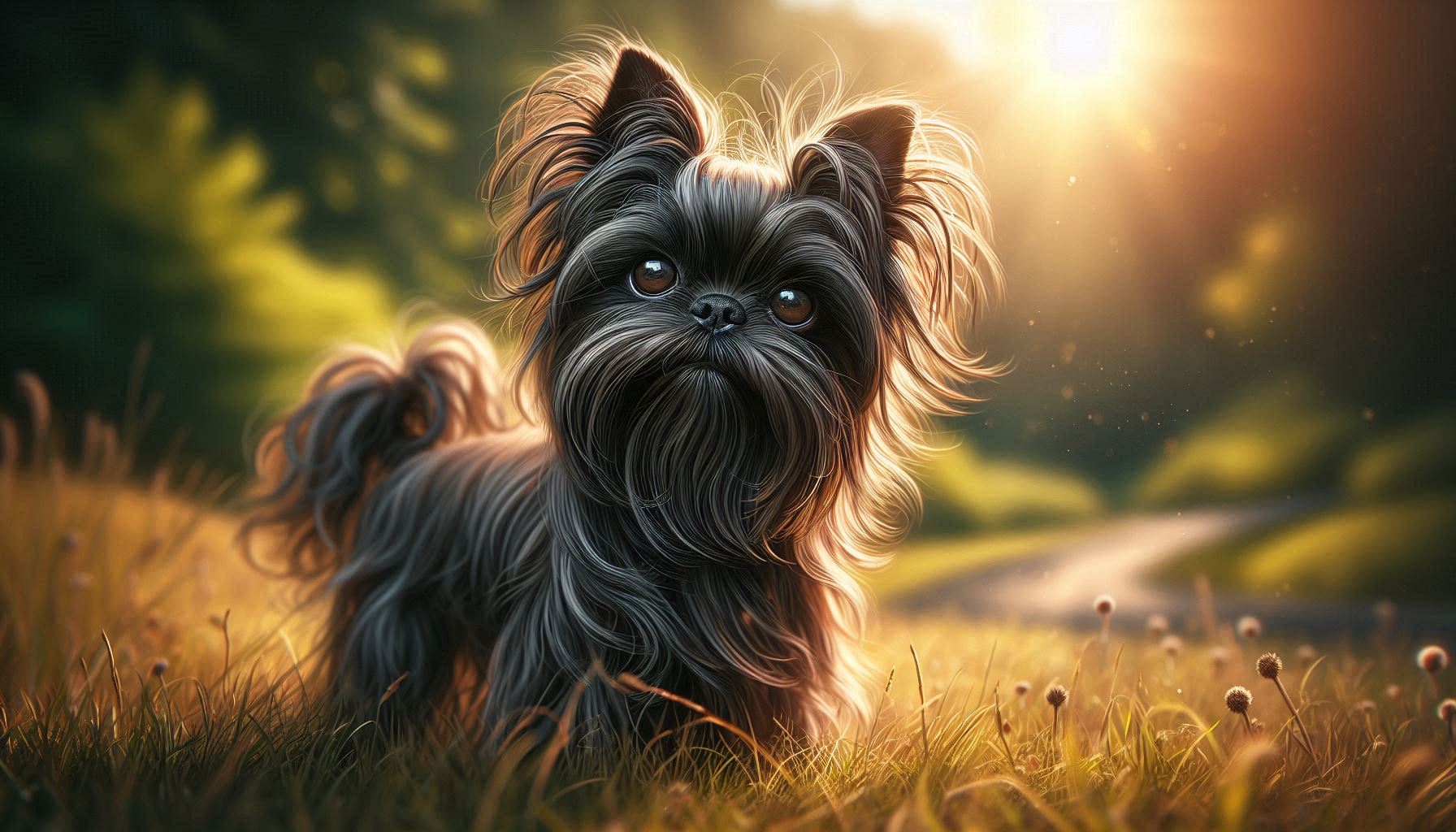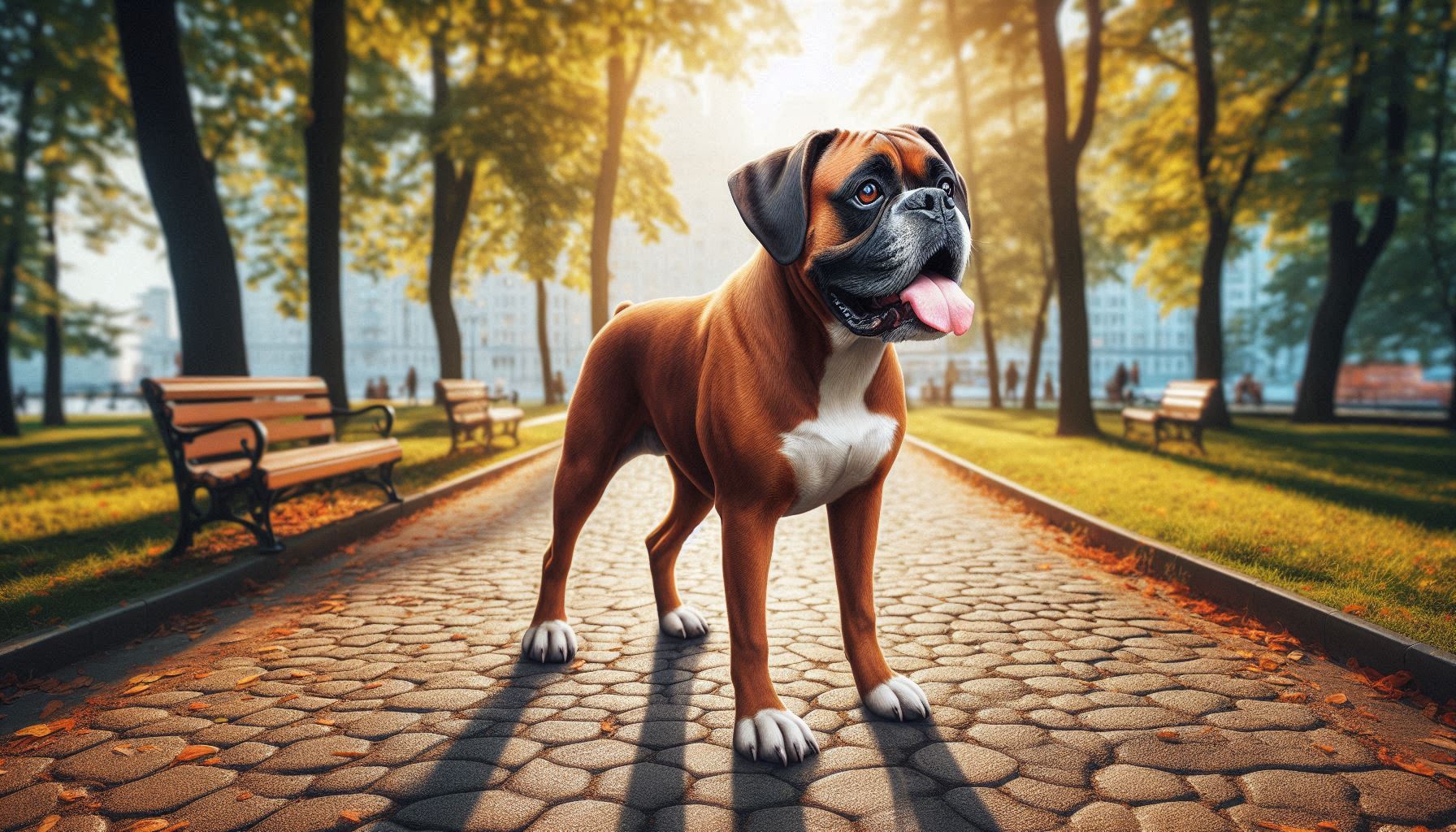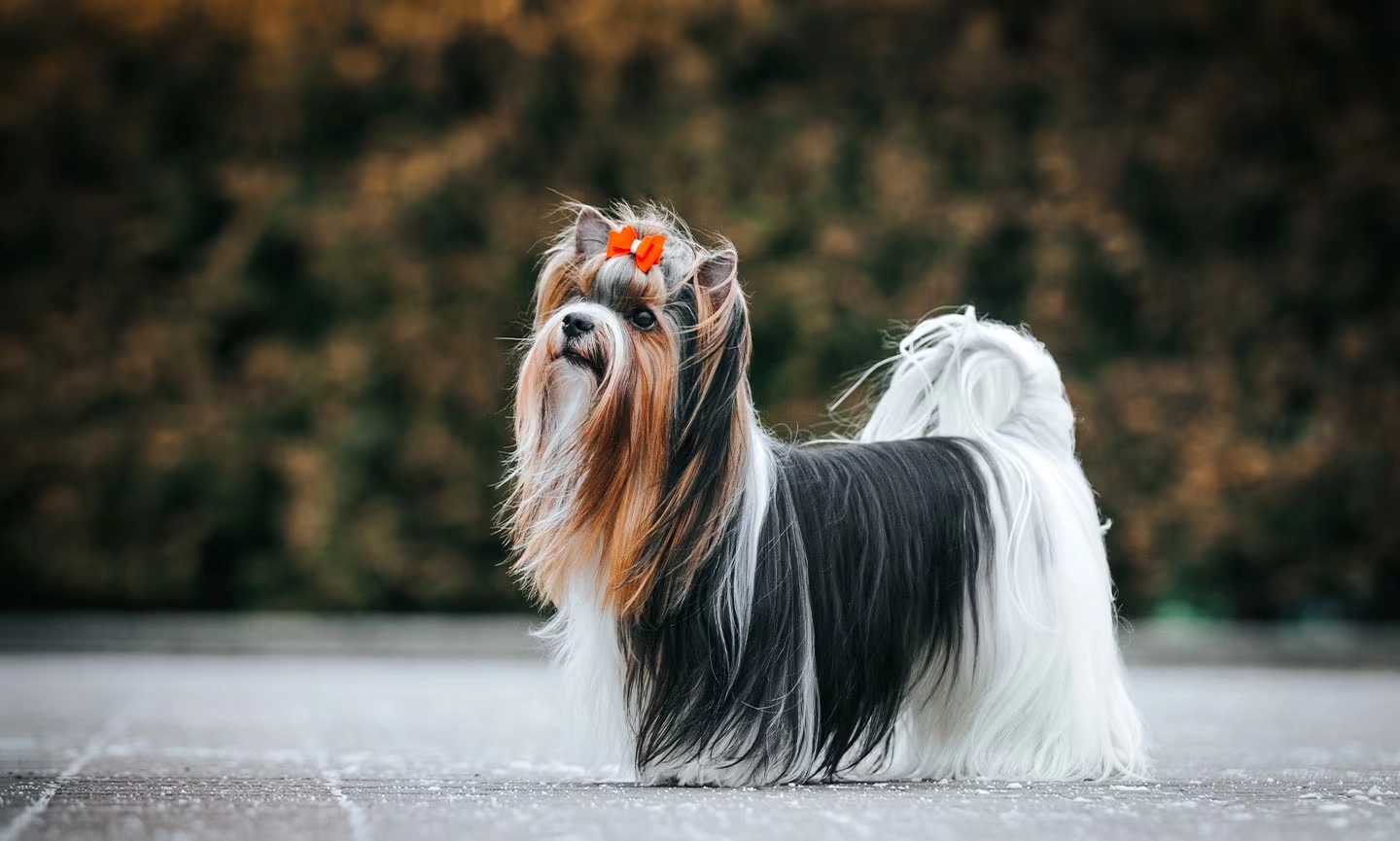Table of Contents
Large Munsterlander Dog Breed
The Large Munsterlander is a versatile and intelligent dog breed known for its remarkable hunting skills, loyalty, and striking appearance. Originating from Germany, this breed has captured the hearts of many dog enthusiasts around the world. Whether you’re an avid hunter looking for a capable companion or a family seeking a friendly and active pet, the Large Munsterlander may be an excellent choice. In this guide, we’ll explore the history, characteristics, and care requirements of the Large Munsterlander to help you decide if this breed is right for you.
History and Origin
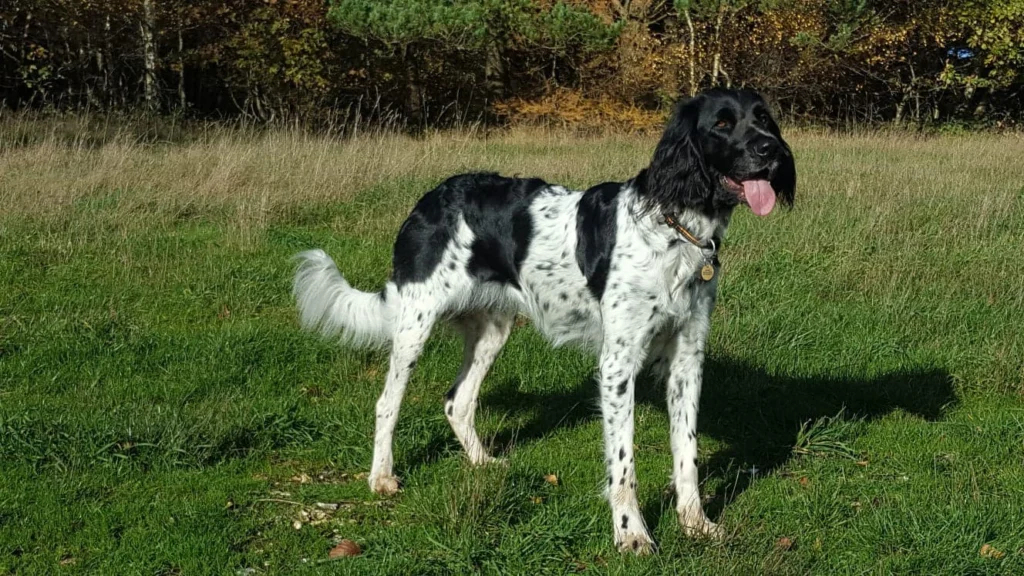
The Large Munsterlander traces its roots back to the Münster region of Germany, where it was developed as an all-purpose hunting dog. The breed’s history is intertwined with that of the German Longhaired Pointer, from which it diverged in the early 20th century. Originally, these dogs were bred to assist hunters in both retrieving game and pointing, making them highly valued for their versatility in the field.
Interestingly, the breed was not recognized as a distinct breed until 1919 when it was separated from the German Longhaired Pointer due to its unique black and white coat. Since then, the Large Munsterlander has grown in popularity, particularly among hunters in Europe and North America. Despite its relatively recent recognition, the breed has a long-standing reputation for excellence in hunting, combined with a friendly and loyal disposition that makes it a beloved companion.
Physical Characteristics
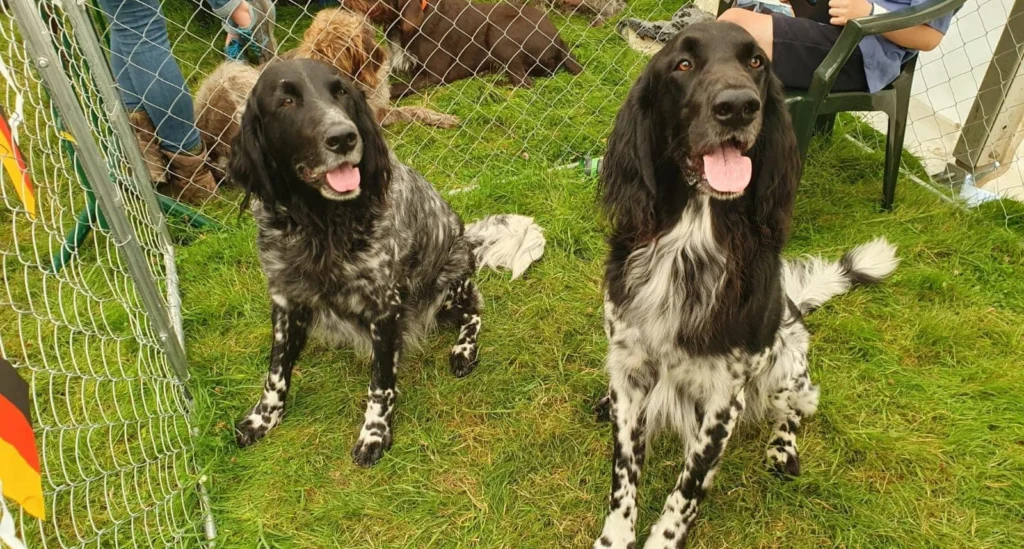
The Large Munsterlander is a medium to large-sized dog, standing between 23 to 26 inches tall at the shoulder and weighing between 50 to 70 pounds. Its most distinctive feature is its striking black and white coat, which is long, dense, and slightly wavy. The coat provides excellent protection against harsh weather conditions, making the breed well-suited for outdoor activities.
Size and Build
The Large Munsterlander has a well-proportioned and muscular build, reflecting its origins as a hunting dog. Its body is slightly longer than it is tall, giving it a balanced and agile appearance. The breed’s tail is typically feathered and carried in a lively manner, adding to its elegant look.
Coat and Colors
As mentioned, the Large Munsterlander’s coat is predominantly black and white, with black patches and ticking on a white background. This pattern is not only aesthetically pleasing but also provides effective camouflage in various natural environments, a trait highly valued in hunting dogs. The breed’s coat requires regular grooming to prevent matting and to keep it looking its best.
Distinctive Features
In addition to its coat, the Large Munsterlander is known for its expressive eyes, which are typically dark brown and convey intelligence and alertness. Its ears are long and set high, hanging close to the head, and are covered in silky hair that complements the breed’s overall appearance.
Temperament and Personality
The Large Munsterlander is a friendly, intelligent, and energetic breed. It is known for its strong bond with its family and its eagerness to please, making it a joy to train and a loyal companion.
Interaction with People and Families
Large Munsterlanders are affectionate dogs that thrive on human interaction. They are known to be particularly good with children, often displaying a gentle and patient demeanor. Their playful nature makes them excellent playmates, while their protective instincts ensure they watch over their family with care.
Interaction with Other Animals
This breed generally gets along well with other dogs and animals, especially when properly socialized from a young age. However, due to its strong hunting instincts, care should be taken when introducing the Large Munsterlander to smaller pets like cats or rabbits. Early socialization and training can help mitigate any prey drive.
Intelligence and Trainability
Large Munsterlanders are highly intelligent and eager to learn, making them relatively easy to train. They respond well to positive reinforcement techniques, such as treats and praise, and are quick to pick up on commands. However, they can be sensitive to harsh training methods, so it’s important to approach training with patience and consistency.
Health and Lifespan
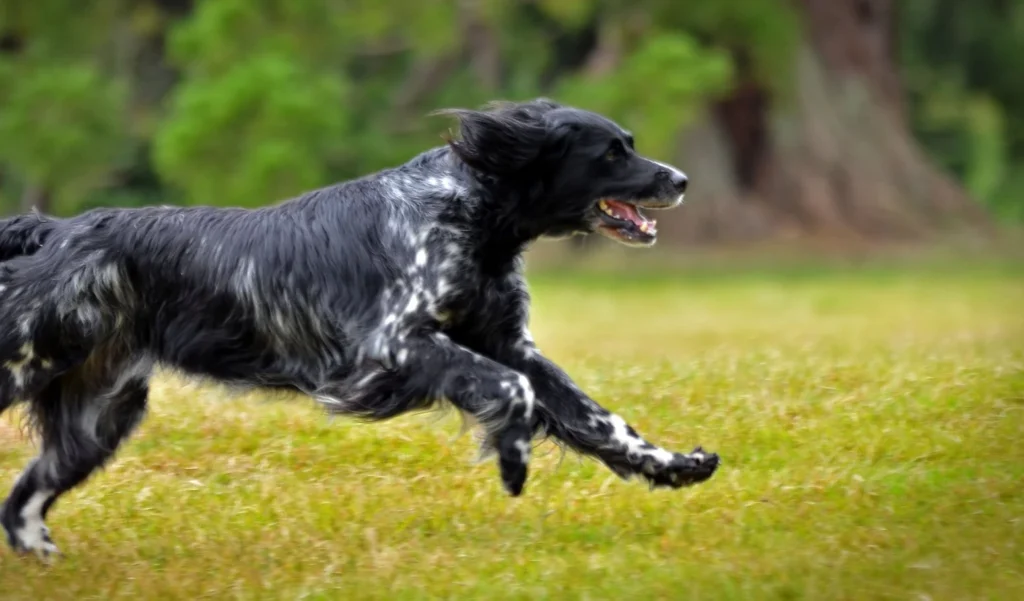
The Large Munsterlander is generally a healthy breed with a lifespan of around 12 to 14 years. However, like all breeds, it can be prone to certain health issues that potential owners should be aware of.
Common Health Issues
Some of the common health concerns in Large Munsterlanders include:
- Hip Dysplasia: A genetic condition where the hip joint doesn’t fit properly into the hip socket, leading to arthritis and pain.
- Elbow Dysplasia: Similar to hip dysplasia, this condition affects the elbow joints and can cause lameness.
- Progressive Retinal Atrophy (PRA): A degenerative eye disorder that can lead to blindness.
Tips for Keeping Your Dog Healthy
To ensure your Large Munsterlander stays healthy, regular veterinary check-ups are essential. Maintaining a balanced diet, providing ample exercise, and keeping up with vaccinations and parasite control will also help keep your dog in top condition. Additionally, responsible breeding practices can minimize the risk of inherited health issues.
Care and Grooming
Caring for a Large Munsterlander involves meeting its grooming, exercise, and dietary needs.
Grooming Needs
The breed’s long coat requires regular brushing, ideally several times a week, to prevent matting and tangling. During shedding season, more frequent brushing may be needed. Bathing should be done as necessary, but not too frequently, to avoid stripping the coat of its natural oils. Regular ear cleaning, teeth brushing, and nail trimming are also important aspects of grooming.
Exercise Requirements
Large Munsterlanders are energetic dogs that require plenty of exercise to stay happy and healthy. Daily walks, playtime, and opportunities to run in a secure area are essential. This breed also excels in dog sports such as agility, obedience, and, of course, hunting trials.
Dietary Recommendations
A high-quality, balanced diet is crucial for the Large Munsterlander. Look for dog food that meets the breed’s nutritional needs, taking into account its age, size, and activity level. Avoid overfeeding, as this breed can be prone to obesity, which can exacerbate joint problems like hip dysplasia.
Training and Socialization
Training and socialization are key components in raising a well-behaved Large Munsterlander.
Training Tips
Start training early, using positive reinforcement techniques to encourage good behavior. Consistency is crucial, as is keeping training sessions fun and engaging to maintain the dog’s interest. Due to the breed’s intelligence, boredom can lead to unwanted behaviors, so mentally stimulating activities and training games are highly recommended.
Socialization Strategies
Socialization should begin as early as possible, exposing your Large Munsterlander to a variety of people, animals, and environments. This will help the dog develop into a well-rounded adult that is comfortable in different situations. Puppy classes, regular playdates, and visits to dog-friendly places are great ways to socialize your dog.
Suitability as a Family Pet
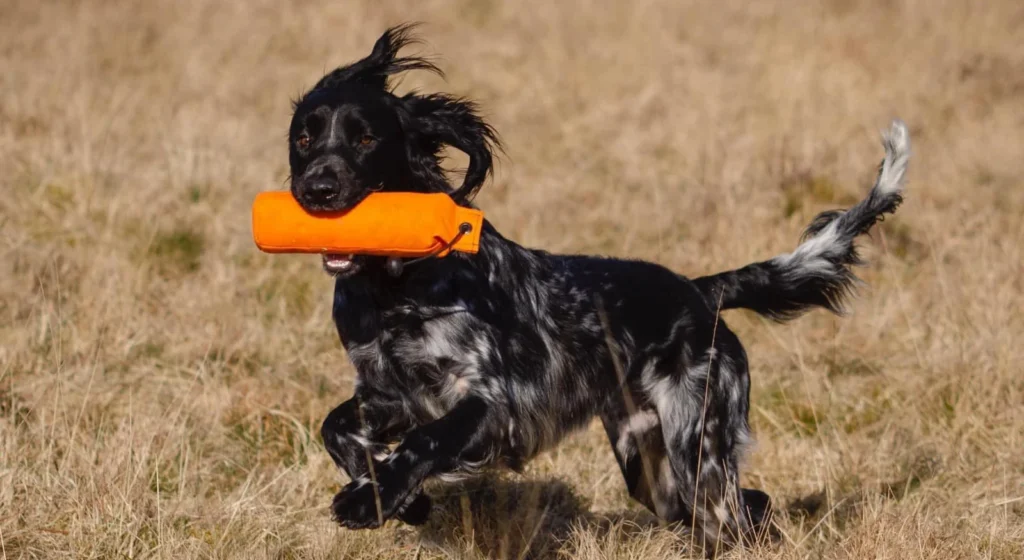
The Large Munsterlander is well-suited for active families who can meet its exercise and social needs. Its friendly and loyal nature makes it a great companion for children and adults alike. However, it is best suited for families who have experience with dogs, as its energy levels and training needs can be demanding for first-time owners.
Living Environment Considerations
While the Large Munsterlander can adapt to various living environments, it thrives in homes with a yard where it can run and play. Apartment living may not be ideal unless the owner is committed to providing ample outdoor exercise. This breed is not suited to being left alone for long periods, as it craves companionship and may develop separation anxiety.
Energy Levels and Family Life
With its high energy levels, the Large Munsterlander is best matched with an active family that enjoys outdoor activities. Whether it’s hiking, running, or participating in dog sports, this breed loves to be on the go. It’s also a great companion for families who enjoy hunting or other outdoor pursuits, as the breed’s instincts and skills are naturally aligned with such activities.
Fun Facts and Trivia
- The Large Munsterlander is often referred to as the “Gentleman of the Hunting World” due to its noble appearance and excellent manners.
- Despite its hunting background, the breed has a soft spot for water and is known to be an enthusiastic swimmer.
- The breed is still relatively rare outside of Europe, particularly in the United States, where it is mainly known in hunting circles.
Similar Dog Breeds

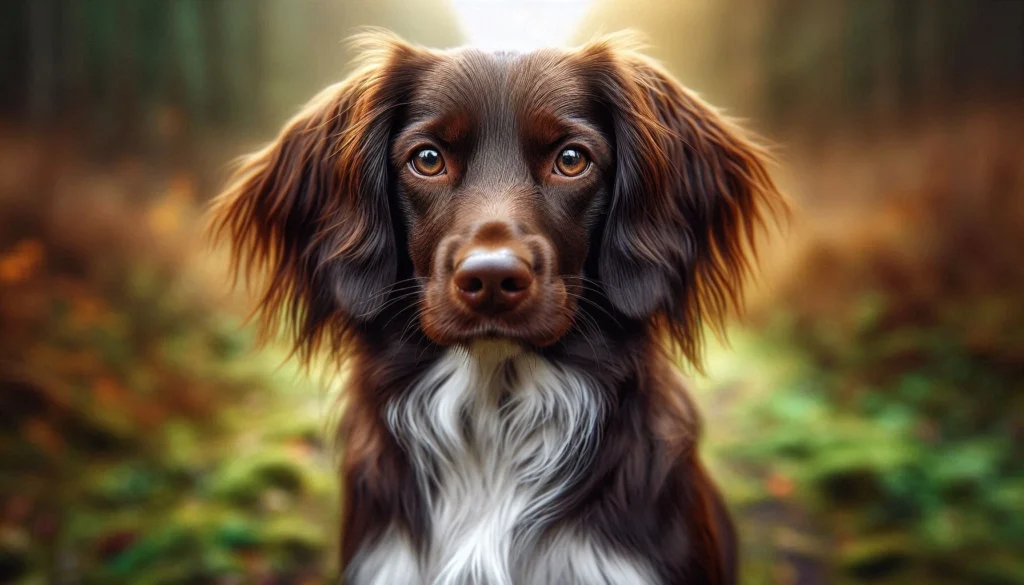
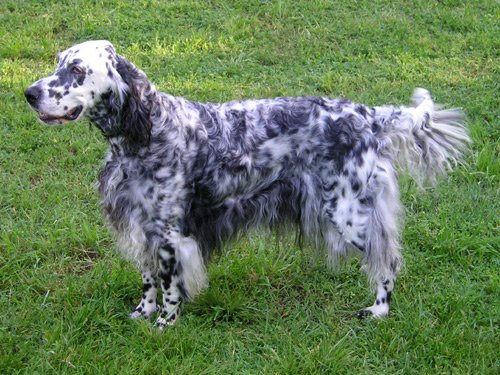
If you’re interested in the Large Munsterlander, you might also want to consider these similar breeds:
- German Longhaired Pointer: This breed shares a common ancestry with the Large Munsterlander and is similarly known for its hunting prowess and friendly disposition. It also has a long, flowing coat but comes in a variety of colors.
- Small Munsterlander: A smaller relative of the Large Munsterlander, this breed offers many of the same characteristics in a more compact size. It’s equally skilled in the field and makes a great companion for active families.
- English Setter: Known for its beautiful coat and gentle temperament, the English Setter is another versatile hunting dog that excels in the field and at home. Like the Large Munsterlander, it requires regular grooming and plenty of exercise.
Conclusion
The Large Munsterlander is a remarkable breed that combines the best qualities of a hunting dog with the affectionate nature of a family pet. Its intelligence, loyalty, and versatility make it a great choice for those who can meet its needs for exercise, training, and companionship. If you’re looking for a dog that can keep up with an active lifestyle and bring joy to your home, the Large Munsterlander might be the perfect match.
FAQ
Is the Large Munsterlander a dangerous dog?
No, the Large Munsterlander is not a dangerous dog. It is known for its friendly and gentle temperament, especially with its family. Like all dogs, it is important to provide proper training and socialization to ensure it behaves well in different situations.
Is the Large Munsterlander a good guard dog?
While the Large Munsterlander is protective of its family and will alert you to strangers, it is not typically considered a guard dog. Its friendly nature makes it more of a watchdog than a guard dog. If you need a dog specifically for guarding, breeds like the German Shepherd or Rottweiler may be more suitable.

